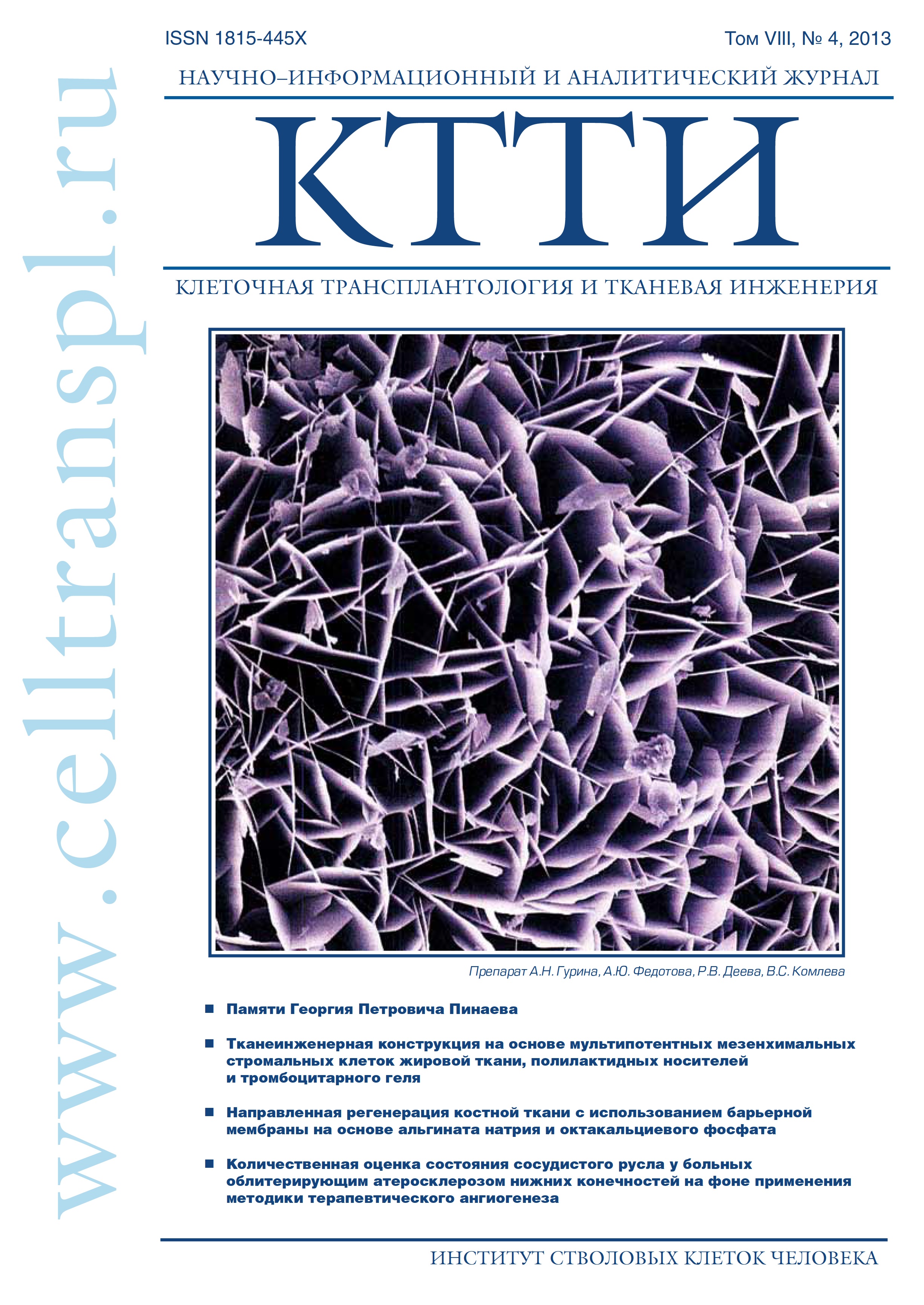Sodium alginate bioresorbable membrane and octacalcium phosphate biomaterial for guided bone regeneration
- Authors: Gunn A.N1,2, Fedotov A.Y.3, Deev R.V4, Komlev V.S3
-
Affiliations:
- Central Scientific Research Institute of Dentistry and Maxillofacial Surgery, Moscow
- I.M. Sechenov First Moscow State Medical University, Moscow
- A.A. Baikov Institute of Metallurgy and Materials Science, RAS, Moscow
- Human Stem Cells Institute, Moscow
- Issue: Vol 8, No 4 (2013)
- Pages: 70-77
- Section: Articles
- URL: https://genescells.ru/2313-1829/article/view/121618
- DOI: https://doi.org/10.23868/gc121618
- ID: 121618
Cite item
Abstract
To study the characteristics of a porous sodium alginate membrane and assess its role in guided bone regeneration of critical bone defects in rats' skulls containing ceramic octacalcium phosphate. The polymer membrane was made through lyophilization of 5 ml of 2% sodium alginate solution sealed with 10% solution of calcium/magnesium chloride (30/70). OCP granules were synthesized through processing calcium salts with orthophosphoric acid. The in vivo experiment involved 24 Vistar rats. Critical 9 mm diameter defects were made in their parietal bones. The animals were divided into four groups: 1st - control group, 2nd - the defect contained OCP granules and was covered with a skin flap, 3rd - OCP under an alginate membrane, 4th - membrane only without OCP. The animals were withdrawn from the experiment after one and three months. The membranes obtained had a porosity of up to 80% and a tensile strength of up to 2mPa. Ceramic OCP granules were porous, spherical, about 0.6 or 0.7 mm in size. XRF showed that the characteristic peak for OCP was at 4.8°0. During the in vivo experiment in the control group, the skin flap grew together with the dura mater and closed the defect. In the second group, OCP granules were allocated randomly in the soft tissues. In the third one, granules became organized within the bone defect and the alginate membrane was preventing the granules from migrating and the connective tissue from growing into the defect. Osteoid tissue was formed and then mineralized. In the fourth group, the alginate membrane gradually went disintegrating, with appearing solid parts resembling ossified fragments. No inflammation was observed. A study of the AM has shown that it matches all the requirements for barrier membranes, by being neutral to the adjacent tissues, not causing inflammation, being able to keep its structure for a long period, building solid, maybe mineralized fragments along with resorption areas, which is evidenced by the sealing lines, and not causing giant multinuclear cells to appear. OCP granules under the AM are gradually resorbed, building up osteoid tissue that then gets mineralized.
About the authors
A. N Gunn
Central Scientific Research Institute of Dentistry and Maxillofacial Surgery, Moscow; I.M. Sechenov First Moscow State Medical University, Moscow
A. Yu Fedotov
A.A. Baikov Institute of Metallurgy and Materials Science, RAS, Moscow
R. V Deev
Human Stem Cells Institute, Moscow
V. S Komlev
A.A. Baikov Institute of Metallurgy and Materials Science, RAS, Moscow
References
Supplementary files










